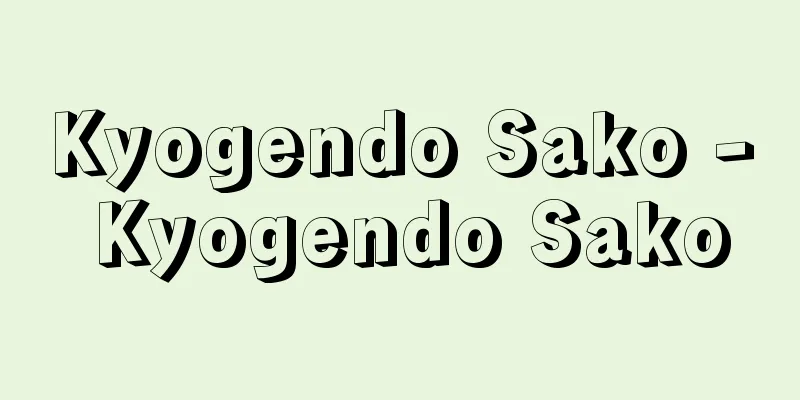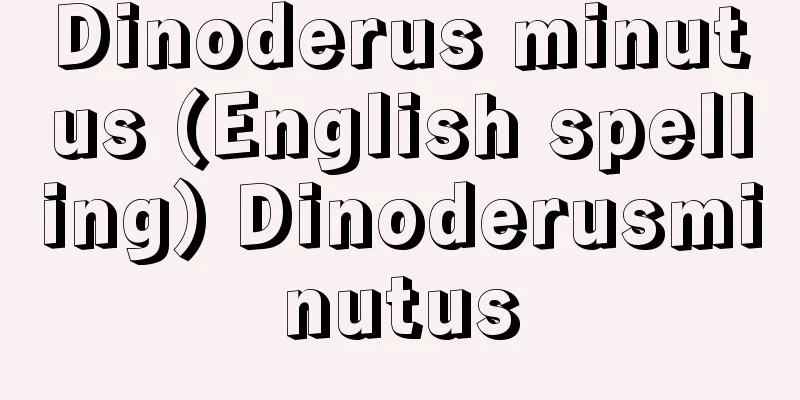Cubism - cubisme (English spelling) French

|
Cubism. The most influential innovative movement in modern art that arose following Fauvism in the early 20th century, and its methods. Fauvism overturned the traditional realism that had existed since the Renaissance in terms of color, while Cubism overturned various principles such as one-point perspective, fleshing, and light and shade in terms of form. It directly inherited the modern art trend of Post-Impressionism, especially Cezanne and the subsequent Nabis, and looking back historically, its origins can be found in the lineage of Piero della Francesca, Poussin, Ingres, and others, but in terms of the boldness of its innovation and the breadth of its influence, it was the greatest revolution in the history of Western painting. In fact, the establishment of Cubism can be seen to have involved the intervention of aesthetics that were different from Western aesthetics, such as the influence of African-American sculpture. And while the Cubist movement and methods had various ripple effects on the surrounding areas, the most core and orthodox Cubism developed from 1907 to 1914. This is usually divided into three periods: Early Cubism, Analytical Cubism, and Synthetic Cubism. [Kimio Nakayama] Early CubismThe direct influence on the establishment of Cubism was the form of the sculpture of black artists discovered by Derain and Matisse, and the Cezanne exhibition held in 1907. Influenced and stimulated by these, Picasso and Braque were the first to try experimental production of new forms. In the "Rose Period," Picasso had already progressed from the simplification of things, expression by lines and color planes, and reproduction of volume to two-dimensional expression. In the winter of 1906-07, influenced by the sculpture of black artists and the Iberian sculptures housed at the Louvre at the time, he began to attempt to simplify and reconstruct the volumes that make up each part of the human body. Furthermore, he introduced the concave surfaces seen in the sculpture of black artists, or negative volumes, so to speak, and moved towards an attempt that was different from the traditional method of Western painting based on light and shade and fleshing. This attempt became "Les Demoiselles d'Avignon" in the spring of 1907, and became the first signal of Cubism. Meanwhile, Braque had also been promoting the simplification and squared-up of objects since around 1907, mainly under the influence of Cézanne's work, but their efforts were furthered by mutual stimulation when they met Picasso. In 1908, the task they faced was to eliminate accidental details from objects, reduce volume to surfaces, and create a permanent form. At this time, Cézanne's words (written in a letter to Emile Bernard in 1904) - "I treat nature with cylinders, spheres, and pyramids" - became a revelation. Expressions of the atmosphere were also eliminated, and light and shade became conceptual to suggest volume. The colors themselves were also limited. Braque also attempted this with figures under the influence of Picasso, while the landscapes that Picasso painted in the summer of 1908 have an effect almost similar to the landscape series that Braque was working on at the same time at Estaque. The following year, they both worked in different places, but their efforts were similar, and they gradually developed from volume to surface. [Kimio Nakayama] Analytical CubismIn the early Cubist stage, there was still a hint of volume, and the concreteness of nature could be discerned, but from 1910 to the following year, objects were broken down into planes and then reconstructed, losing most of their realistic aspects. It was also during this period that the principle of one-point perspective, which had been used for the past four centuries, was abandoned and multiple perspectives were incorporated. This technique had already been used in ancient Egypt and the Middle Ages, for example, and was also attempted by Cezanne, but Picasso and others applied it in a more detailed and rigorous manner, breaking down objects into small planes of various shapes. Thus, for example, a bottle is presented in both cross and longitudinal sections. Picasso and Braque's works were exhibited at the Galerie Kahnbeiler in Paris, which attracted a generation of painters. Room 41 of the 1911 Salon des Indépendants was a demonstration of the followers of Cubism: Metzinger, Léger, Gleizes, Le Fauconnier, and Delaunay. They all embraced Analytical Cubism in their own individual ways, but the most important development was made by Léger and Delaunay in the direction of a dynamic, chromatic Cubism. In 1911, when analytical cubism reached its climax, Braque introduced pieces of paper such as newspapers and labels into his paintings. This was done with the intention of restoring reality to paintings where things had been deconstructed and their inherent colors replaced with browns, grays, greens, etc. This attempt resulted in the reproduction of the texture of marble or wood, or the pasting of wallpaper or labels, and was carried out by Picasso and Braque in 1912. This is known as papier collé. [Kimio Nakayama] Synthetic CubismHowever, it was the newcomer Juan Gris who boldly promoted the restoration of reality through Cubist techniques in opposition to analytical Cubism. In his words, the technique of "making a bottle from a cylinder" was also adopted by Picasso and Braque, and was followed by Marcoussi. This new style was developed from the end of 1912 until 1914, and by using papier-colle and trompe-l'oeil (optical illusion), and adopting elliptical lighting, he created paintings that were reconstructions of reality. This was synthetic Cubism. With the Salon des Indépendants in 1911 and the following year's exhibition, the Section d'Or in 1913, and the publication of Apollinaire's "Cubist Painters" (1913), the visual revolution and aesthetics of Cubism gradually came to be understood, and it had a decisive influence on the subsequent development of modern art. Its influence can be seen in all aspects of art, including abstract art, Orphism, Purism, Futurism, and the École de Paris. [Kimio Nakayama] "Cubism" by E.F. Fry, translated by Haruki Yaegashi (1973, Bijutsu Shuppansha)" ▽ "The Road to Cubism" by D.H. Kahnweiler, translated by Nobuyuki Senashi (1976, Kashima Publishing) Source: Shogakukan Encyclopedia Nipponica About Encyclopedia Nipponica Information | Legend |
|
立体主義。20世紀初頭、フォービスムに続いておこった近代美術のもっとも影響力の多い革新運動、およびその手法。ルネサンス以来の伝統的な写実主義を、フォービスムは色彩的に覆したが、これに対してキュビスムは、形態の面で、一点透視法や肉付け、明暗などの諸原則を覆した。直接的には後期印象派、とくにセザンヌやその後のナビ派による近代美術の流れを受け継ぎ、さらに歴史的に回顧すれば、ピエロ・デッラ・フランチェスカ、プーサン、アングルなどの系譜にその淵源(えんげん)をみいだすことができるが、その革新性の大胆さと影響力の広さの点で、西洋絵画史におけるもっとも大きな変革であった。事実、キュビスムの成立には、黒人彫刻の影響など、西欧の美学とは異質の美学の介在が認められる。そしてキュビスムの運動と手法は周辺にさまざまな波及効果を及ぼしたが、もっとも核心的、正統派的なキュビスムは、1907年から14年まで展開した。これを通常、「初期キュビスム」「分析的キュビスム」「総合的キュビスム」の3期に分類する。 [中山公男] 初期キュビスムキュビスムの成立に直接影響力をもったのは、ドラン、マチスたちによって発見された黒人彫刻の造形と、1907年に開催されたセザンヌ展である。そしてこれらの影響と刺激下に、最初に新しい造形の実験的制作を試みたのがピカソとブラックである。「ばら色の時代」においてすでに事物の単純化、線と色面による表現、ボリュームの再現から二次元的な表現へと進んでいたピカソは、06~07年の冬ころから、黒人彫刻や当時ルーブル美術館に収蔵されたイベリア彫刻などの影響下に、人体の各部分を構成する各ボリュームを単純化し再構成する試みに入り、さらに、黒人彫刻にみられる凹面、いわば負のボリュームを導入し、明暗と肉付けを基本とした西洋絵画の伝統的な手法とは異質の試みに向かっている。この試みが07年春に『アビニョンの娘たち』となり、キュビスムの最初の烽火(ほうか)となる。一方ブラックも同じ07年ころから、主としてセザンヌの作品の影響下に、事物の単純化、方形化の試みを推進していたが、ピカソと出会うことによって、両者の試みは相互刺激のもとに促進される。08年、両者が直面した課題は、事物から偶然的な細部を排除して、量感を面に還元し、永続的な形態構成とすることであった。このとき、「自然を円筒と球と三角錐(すい)によって扱う」というセザンヌのことば(1904年のエミール・ベルナールへの手紙)が啓示となる。大気の表現も排除され、明暗も量感を暗示するための観念的なものとなる。また色彩そのものも限定される。ブラックは、ピカソの影響下に人物でもこの試みをなし、他方ピカソが08年夏に描いた風景は、同じときブラックがエスタックで行っていた風景連作とほとんど類似の効果をみせる。翌年も両者は異なった場所で制作したが、両者の試みは近似し、しだいにボリュームから面へ、その試みは発展する。 [中山公男] 分析的キュビスム初期キュビスムの段階では、まだボリュームの暗示がなされ、自然の具象性が判別しうる状態であったが、1910年から翌年にかけて、事物の面への解体とその再構成が進行し、ほとんどリアリスティックな側面が失われる。また過去4世紀にわたって行われてきた一点透視法の原則が捨てられ、多視点的遠近法が複合されるのもこの時期である。すでにこの手法は、たとえば古代エジプトや中世にも行われ、セザンヌもまた試みた手法であったが、ピカソたちは、より細分化され、厳密化された手法で適用し、小さなさまざまな形の面に事物を分解している。したがって、たとえば瓶などは、その横断面と縦断面で提示されている。 ピカソとブラックの作品はパリのカーンバイラー画廊で展示されたが、それは同世代の画家たちをひきつけた。1911年のアンデパンダン展41室が、これらのキュビスムの追随者のデモンストレーションとなった。メッツァンジェ、レジェ、グレーズ、ル・フォーコニエ、ドローネーたちである。彼らは、それぞれの個性差を示しながら分析的キュビスムを受け入れたが、なかでも重要なのは、レジェ、ドローネーたちによってなされた、動的、色彩的キュビスムの方向への開発である。 1911年、分析的キュビスムが頂点に達した時期、ブラックは画面に、新聞紙、ラベルなどの紙片を導入する。事物が解体され、固有色が茶褐色、灰色、緑などに置き換えられた画面に、現実性を回復させようとする意図からである。この試みは、大理石や木材の肌理(きめ)の模写、あるいは壁紙やラベルなどの貼付(ちょうふ)となり、12年にピカソ、ブラックによって行われた。いわゆるパピエ・コレpapier colléである。 [中山公男] 総合的キュビスムしかし、分析的キュビスムに対して、より大胆に、キュビスムの手法による現実回復を推進したのが新来者のフアン・グリスである。彼のことばによれば、「円筒形から瓶をつくる」手法は、ピカソやブラックによっても受け入れられ、マルクーシによっても追随される。この新しい作風は1912年末ころから14年まで展開し、パピエ・コレやトロンプ・ルイユ(だまし絵)の使用、楕円(だえん)形の照明などの採用で、現実の再構成としての画面をつくる。これが総合的キュビスムである。 1911年のアンデパンダン展に続く翌年の同展、13年のセクション・ドール展、またアポリネールの『キュビスムの画家』(1913)の出版などによって、キュビスムの視覚革命と美学はしだいに理解され、以後の現代美術の発展に決定的な影響を与えた。抽象美術、オルフィスム、純粋主義、未来派、あるいはエコール・ド・パリなど、あらゆる局面にその影響がみられる。 [中山公男] 『E・F・フライ著、八重樫春樹訳『キュビスム』(1973・美術出版社)』▽『D・H・カーンワイラー著、千足伸行訳『キュビスムへの道』(1976・鹿島出版会)』 出典 小学館 日本大百科全書(ニッポニカ)日本大百科全書(ニッポニカ)について 情報 | 凡例 |
>>: Cuvier, Georges Léopold Chrétien Frédéric Dagobert, Baron
Recommend
Mouse grass - Mouse grass
A perennial grass of the grass family found under ...
Pair-oared shell without coxswain
...There are no regulations on the material or si...
Kreōn (King of Corinth)
…When they came to Iolcus, where Aisōn, the fathe...
Zeune, JA (English spelling) ZeuneJA
… [Name and its scope] The peninsula we now call ...
Coalition government - Rengoseiken
Under the parliamentary cabinet system, a governm...
Floating sea anemone
…The muscles of the body wall are well developed,...
The social function of science
... From a young age, he had a deep interest in t...
Cold front
A front in which the cold air mass is dominant an...
Internal friction
When a force within the elastic range is applied ...
Volsci - Volsci (English spelling)
An ancient Italian mountain people of Osco-Umbrian...
hook harp
… In Europe, harps are roughly divided into diato...
Small, W. (English spelling) SmallW
…Although it was a local organization consisting ...
Botha, L.
…After the war, Britain sought reconciliation wit...
Najīb 'Azūrī
?-1916 Arab nationalist journalist. Of Maronite Ch...
Unebiyamaguchi Shrine
…The foot of Mount Unebi and the area of Karu t...









